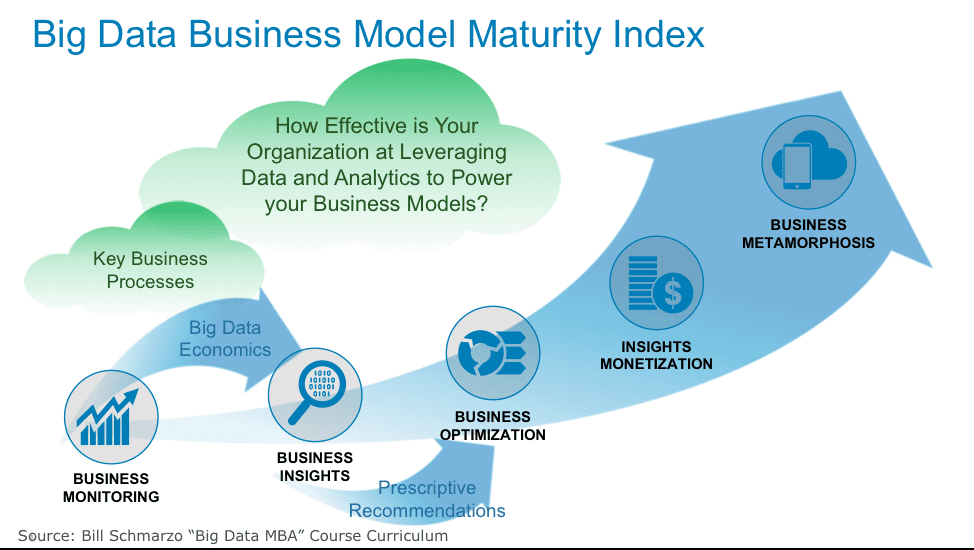Forrester published a report titled “The Sorry State of Digital Transformation in 2018” (love the brashness of the title) that found that 21% of 1,559 business and IT decision makers consider their digital transformations complete. Complete? Say what?!
The concept of “Digital Transformation” is confusing because many CIO’s (at least 21%) and their business counterparts think “Digital Transformation” is about deploying digital technologies (like smartphones, tablet and “native cloud” applications) to convert manual and analog processes into digital processes. It’s the word “Digital” that is confusing because it immediately steers the conversation towards technology.
So let me try something different – I don’t want to achieve digital transformation, I want to achieve “Intelligence Transformation” where intelligence is defined as: “The ability to continuously learn and evolve with every interaction.”
I want to embed “intelligence” into every one of my products, processes and services. I want to create products, processes and services that are continuouslylearning and evolving from every interaction, whether that interaction is with a customer, employee, partner or even another machine. Which then leads me to my definition of “Intelligence Transformation”: The application of advanced analytic capabilities to create continuously learning and adapting processes, products, and assets that improve business and operational efficiency, enhance customer value, mitigate compliance and security risk, and uncover new monetization opportunities”
It’s not a focus on the “what” (visual perception, speech recognition, language translation, neural networks, machine learning), but a focus on the “why” (operational efficiency, risk mitigation, customer value).
Intelligence Transformation Elements
In my simplified world of teaching, I like to boil things down to their basics. What I’ve found in teaching at the University of San Francisco School of Management is that if you don’t explain something succinctly in the classroom, you’ll immediately be faced with 30 raised hands.
So here are the three elements that comprise Intelligence Transformation:
- Big Data. Big Data is the fuel behind the intelligence transformation because it is within the growing bounty of structured and unstructured data that patterns, relationships and insights are buried. The more data, the better. And the more accurate, more granular, more complete (with robust metadata) and lower latency the data, the better.
- Advanced Analytics. Advanced Analytics includes the bevy of advanced analytic tools (statistics, data mining, predictive analytics, machine learning, deep learning, reinforcement learning) that we use to tease out or uncover customer, product and operational insights out of that growing bounty of data. See “Artificial Intelligence is not “Fake” Intelligence” blog.
- Intelligent Applications. Applications are the vehicle for delivering actionable insights (think prescriptive and preventative recommendations) AND capturing the resulting interactions and actions of the humans and machines as they interact with the application. See “The Future Is Intelligent Apps” blog.
That’s it. Sure we can expand that list to the point where it’s so confusing that 21% of CIOs will think they’ve achieved Intelligence Transformation. But what’s the point of doing that (unless you are a technology vendor or an analyst, where confusion and FUD seem to be your best sales tools).
Intelligence Transformation is about how effective the organization is at leveraging big data and advanced analytics to create intelligent value creation processes. Intelligence Transformation is about how the economics of big data and advanced analytics can re-engineer your business models (see Figure 1).

Figure 1: Big Data Business Model Maturity Index
I’m in Bali this week to lead a workshop with Hitachi Vantara’s top Asia-Pac customers. You can bet that this topic will be top of the agenda!
